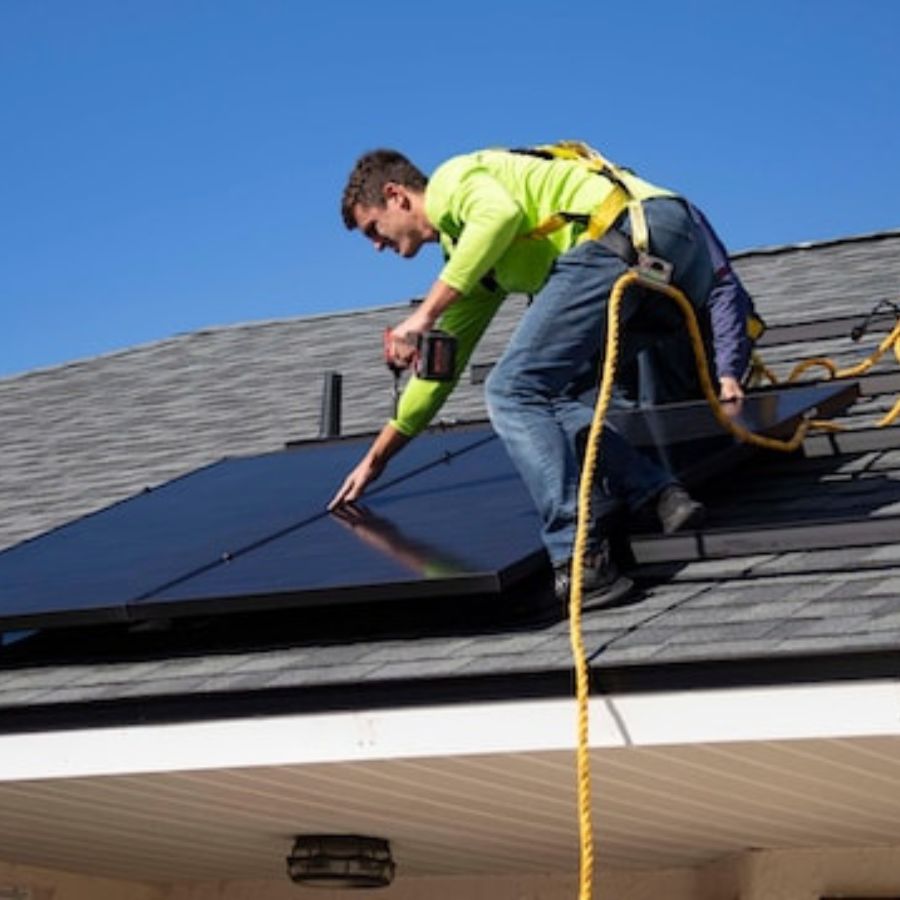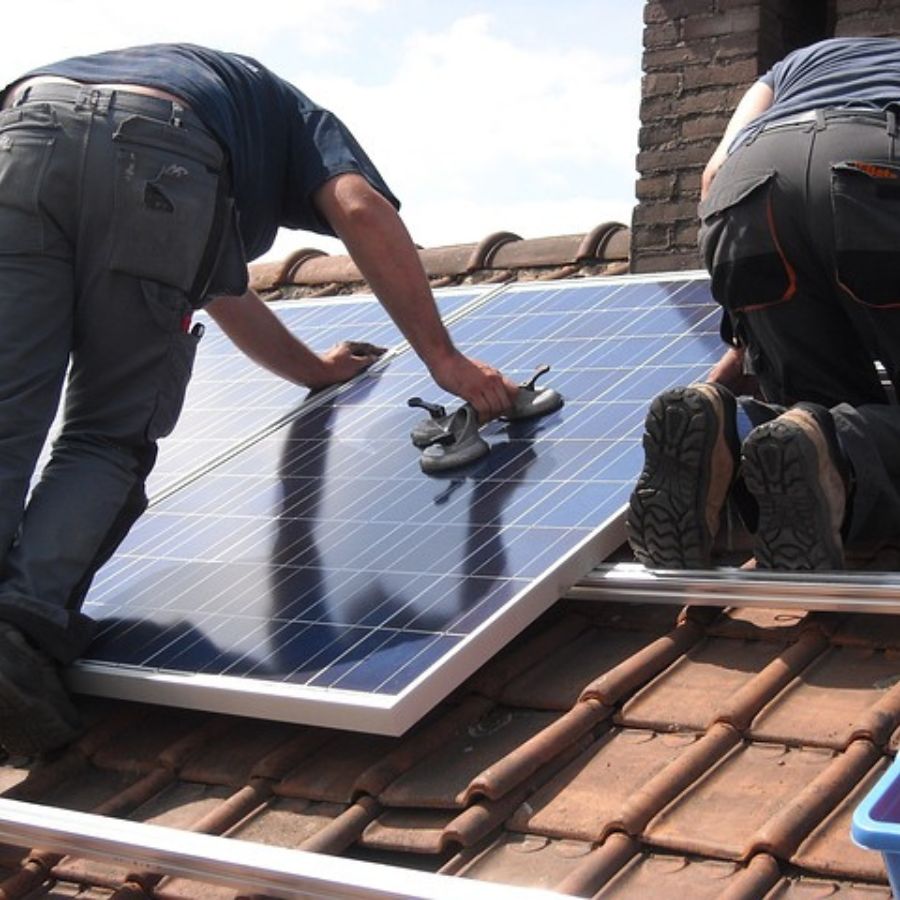In the age of renewable energy and sustainable living, solar power has emerged as a reliable and eco-friendly generating electricity solution. Solar panels harness the sun’s power and convert it into usable energy for various applications, including charging batteries. If you’re wondering how to calculate your solar battery capacity, including what size solar panel you need to charge a 12V battery, this article aims to provide you with the necessary insights.
Understanding Solars Power Basics
Before embarking on sizing a solar panel for a 12V battery, it’s imperative to grasp the foundational principles of solar power generation. At the heart of this process are solar panels, equipped with photovoltaic (PV) cells. Furthermore, they diligently capture sunlight and seamlessly transmute it into direct current (DC) electricity. Besides, this conversion paves the way for applications. Such applications include energizing household appliances and charging batteries to transform electricity into alternating current (AC) to power homes.
Pondering the intricate questions of how many solar panels are needed or what size solar panel to opt for is essential. It helps in acquainting yourself with these core concepts becomes indispensable. The efficient harnessing of solar energy hinges on this comprehension. Besides, it guides you toward informed decisions about the number and size of solar panels required to meet your energy needs. As you venture into sustainable energy, this foundational knowledge sets the stage for a successful and eco-conscious energy transition.
Factors Affecting Solar Panel Sizing

The solar panel size you need to charge a 12V battery depends on several factors. These factors include:
Battery Capacity
Battery capacity plays a pivotal role in the solar panel to charge a 12V battery. Measured in ampere-hours (Ah), it signifies the energy storage potential. Larger 12V batteries necessitate a higher energy output from the solar panel. In addition, it helps to achieve a complete charge.
Consequently, the solar panel size should align with the battery’s capacity to ensure optimal charging. Moreover, incorporating a solar charge controller is prudent to regulate the charging process. Furthermore, it helps to safeguard the 12V battery from overcharging. Balancing these factors ensures an efficient and controlled energy transfer from the solar panel to the 12V battery. It also fosters longevity and reliable performance.
Sunlight Availability
The availability of sunlight is crucial when considering solar energy systems and battery voltage. Sunlight intensity fluctuates across seasons and throughout the day, impacting solar panel performance. Areas blessed with abundant sunlight can suffice with smaller solar panels. Regions with diminished sunlight may necessitate larger panels to ensure optimal energy capture.
The concept of peak sun hours is crucial, representing the time when sunlight intensity is at its maximum. Moreover, it dictates the efficiency of solar panels in charging deep-cycle batteries. Understanding this interplay is vital for configuring a resilient and effective solar energy system. Besides, this is where solar panel size aligns seamlessly with sunlight availability for consistent and dependable energy generation.
Efficiency
Efficiency is an essential metric in any solar panel system, influencing its ability to harness solar energy effectively and charge a deep-cycle battery. This parameter gauges how proficiently a panel transforms sunlight into electricity. Panels with higher efficiency yield greater energy output per unit of sunlight, diminishing the required surface area to generate equivalent power compared to less efficient counterparts. Again, this attribute resonates especially during peak sun hours when sunlight intensity is at its zenith.
Employing efficient panels, often integrated with maximum power point tracking technology, ensures optimal energy capture for charging deep-cycle batteries. In addition, it enhances the overall performance of a solar panel system. Efficiency becomes pivotal in maximizing energy conversion while streamlining the necessary solar panel size. Furthermore, it offers a sustainable approach to energy generation.
Charging Time
The desired charging time holds significance when considering the appropriate solar panel to charge a 12V battery. Opting for a quicker battery charge requires a larger-watt solar panel to generate substantial power within a limited duration. Besides, this approach becomes particularly relevant when sunlight exposure is direct and ample.
Utilizing a larger solar panel size accelerates the energy conversion process, expediting the battery’s charge replenishment. Besides, this consideration is especially relevant when employing high-capacity batteries like lithium iron phosphate batteries, where swift charging aligns with their capabilities. Ultimately, tailoring the solar panel size to the charging time goal ensures an optimal energy balance. It also meets specific requirements for battery-powered systems, enhancing their efficiency and performance.
Temperature and Climate
Consider the temperature and climate when contemplating what size solar panel to charge a 12V battery. In addition, solar panels exhibit varying performance under different conditions. Extremely hot or cold environments can influence panel efficiency, impacting the energy output and, subsequently, the necessary panel size.
Temperature-sensitive components can lead to fluctuations in peak sun hours and alter the charging capabilities of a deep-cycle battery. In regions with direct sunlight exposure, temperature-related deviations can affect energy conversion ensuring an adequate solar panel size becomes crucial. Thus, adapting the panel size based on prevailing temperature and climate conditions is vital to optimize energy generation. Moreover, it helps to achieve efficient charging for 12V battery systems.
Calculating Solar Panel Size
To calculate the size of the solar panel needed to charge a 12V battery, you can follow these steps:
Determine Battery Capacity
When deliberating on what size solar panel to charge a 12V battery, the initial step involves determining the battery’s capacity. It is usually in ampere-hours (Ah) within the battery’s specifications. This fundamental information lays the groundwork for selecting the appropriate solar panel size.
You can calculate the solar panels’ required capacity to ensure efficient and effective charging by understanding the battery’s energy storage capability. This pivotal step aligns the size of the solar panels with the battery’s needs, enabling a harmonious energy exchange that optimally powers your 12V battery system.
Calculate Energy Needed
When evaluating how many solar panels are necessary or what size solar panel to charge a battery, factoring in energy losses is crucial. Charging a battery entails accounting for efficiency losses during energy conversion. A general guideline is to multiply the battery capacity by a factor of 1.3 to 1.5. Again, this compensates for losses, providing a more accurate estimation of the energy needed to effectively charge the battery.
Incorporating this rule of thumb ensures that the chosen solar panels align with the requisite energy output, enabling efficient and reliable charging. By considering these losses, you can confidently determine the optimal solar panel size for your specific battery charging requirements.
Estimate Daily Sunlight Hours
When contemplating what size solar panel to charge a 12V battery, estimating daily sunlight hours is paramount. Researching the average sunlight duration in your region aids in determining the optimal solar panel size. Sources like the National Renewable Energy Laboratory (NREL) or local meteorological services provide valuable data on sunlight availability.
Understanding peak sun hours for your area assists in gauging how efficiently solar panels can charge the battery. This information is vital for configuring not only the solar panel sizes but also considering the implementation of a solar charge controller to regulate energy transfer and optimize the battery’s charging process. Accurate estimation of daily sunlight hours lays the foundation for an effective solar energy system that harmoniously integrates solar panels to power 12V battery setups.
Calculate Daily Energy Generation
Calculating daily energy generation is essential when determining what size solar panel to charge a 12V battery. Multiply the solar panel’s capacity, typically measured in watts, by the average sunlight hours in your location. This computation yields the daily energy output of the panel. Moreover, this information is pivotal for assessing whether the solar panel can generate the required energy to efficiently charge the battery.
You gain insights into how well the solar panel can meet your energy needs by performing this calculation. Additionally, factoring in a solar charge controller is prudent to regulate energy flow and safeguard the battery during the charging process. Accurately calculating daily energy generation sets the stage for a successful solar energy system that powers your 12V battery setup.
Determine Panel Size
In the process of establishing the appropriate solar panel sizes to charge a 12V battery, determining the panel size hinges on a simple calculation. Divide the daily energy required to charge the battery by the daily energy generated by the solar panel. This computation offers an estimated panel size in watts. This crucial step allows you to align the solar panel’s capacity with the battery’s energy needs, ensuring efficient charging.
You can confidently select a solar panel that fulfills the necessary energy output. It fosters an effective and optimized energy transfer from the panel to the battery. This approach tailors the panel size to your specific requirements, enhancing the overall performance of your solar-powered system.
Real-World Example
Let’s consider a real-world example to illustrate the calculation:
- Battery Capacity: 12V battery with a capacity of 100Ah.
- Efficiency Factor: Assuming an efficiency factor of 1.3.
- Average Sunlight Hours: 5 hours per day.
- Solar Panel Efficiency: A solar panel with a capacity of 150W and an efficiency of 15%.
Calculations
- Energy Needed: 100Ah * 1.3 = 130Ah
- Daily Energy Generation: 150W * 5 hours = 750Wh (or 0.75kWh)
- Panel Size: 130Ah * 12V / 0.75kWh = 2080W
In this example, you would need a solar panel with a capacity of around 2080 watts to effectively charge a 12V battery with a 100Ah capacity, considering the given factors.
Recommendations and Considerations

While calculations provide a starting point, there are a few additional recommendations and considerations to keep in mind:
Oversizing
It’s often best to oversize the solar panel slightly to account for unforeseen inefficiencies or changes in energy consumption.
Charge Controller
Use a charge controller to regulate the charging process and prevent overcharging, which can damage the battery. Ensure the charge controller is compatible with the solar panel and the battery.
Tilt and Orientation
Properly orienting and tilting the solar panel can significantly impact its energy generation. Tilt angles should be adjusted based on your geographical location. Regularly clean the solar panel’s surface to remove dirt and debris that might hinder its performance.
Conclusion
Choosing the right size solar panel to charge a 12V battery involves considering various factors, such as the battery capacity, sunlight availability, efficiency, and charging time. Following the steps outlined in this article and using online resources provided by organizations like the NREL helps to calculate a suitable solar panel size for your specific needs. Remember that these calculations provide estimates, and real-world conditions may vary.
It’s always a good idea to consult experts or professionals to ensure your solar power system is optimized for maximum efficiency and longevity. Embracing solar energy benefits the environment and empowers individuals to become self-reliant energy producers.
